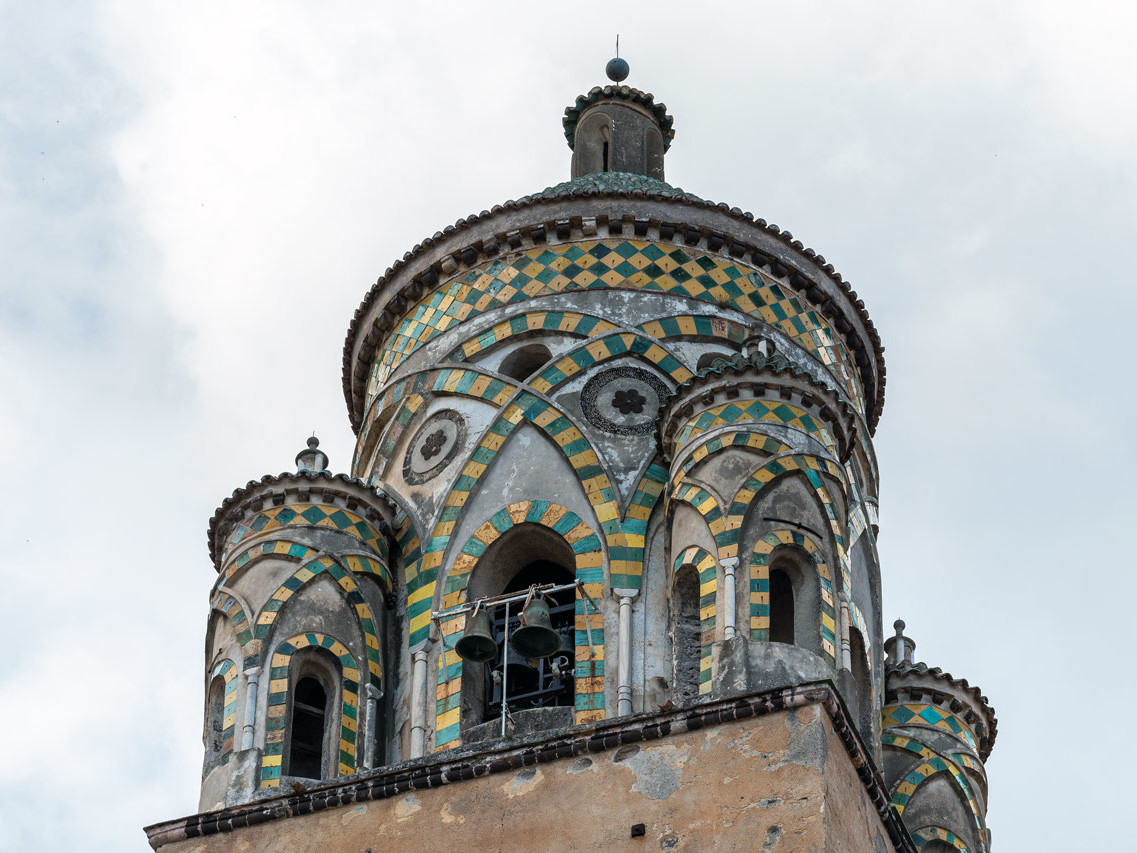THE CERAMICHE SOLIMENE FACTORY
The Ceramiche Solimene Factory, located in Vietri sul Mare, has a centuries-old tradition in ceramics entirely Made in Italy and exported all over the world. This building is the only Italian work by the architect Paolo Soleri, and the structure of the factory itself is a real piece of art.
by Barbara Iovine
During your visit to Vietri, do not miss the opportunity to visit the famous Ceramiche Solimene Factory: one of the most famous artisan production centers of the South of Italy. The ancient productions of these handmade artistic ceramics are made with traditional methods handed down through the generations.
The factory is right in front of the sea and has a very particular architecture. It is possible to just visit it, but it is as well possible to buy some of the irresistible objects, tableware, tables, and decorations. It is an experience that you will carry in your heart for a long time!
share this article
The Ceramiche Solimene Factory - Vietri
The Ceramiche Solimene Factory and Paolo Soleri: a project that respects the environment
This structure, built in 1954, is the only Italian work of the architect from Turin, Paolo Soleri, one of the major collaborators of the studio of the famous American Frank Lloyd Wright. Soleri went to Vietri to try his hand at ceramics and showed his friend and client, Vincenzo Solimene, in a clay model, an ambitious project: the building Ceramiche Solimene. This project over time has become one of the most significant buildings of the century, often defined as an unicum, difficult to classify in a well-defined architectural scheme.
The architect has always shown profound respect for the environment, trying to develop an “ecological and sustainable” architecture: by designing this work he excelled in his goal. He manages to create such an imaginative place in a very narrow space - compressed between a rocky wall and a highway - to protect the surrounding terraced crops and the choir of centuries-old pines behind it. He tries to gain surface by developing the building almost completely vertically, so much so that today it seems to be part of the local landscape dimension. It is a state-of-the-art factory whose absence is difficult to imagine.


A visit to the Ceramiche Solimene Factory: four flights of pure art
The Ceramiche Solimene is located at the entrance of the village, in via Madonna degli Angeli and, already at first glance, you can realize the originality in its surprising aesthetic. The façade recalls the best works of Gaudì: it is characterized by a series of overturned conical towers, connected by large triangular windows, which create inside the building surprising plays of light that descend from above. Furthermore, on one side of the external wall and along the pavement below, various applications are depicting different subjects and motifs which, alternating with small portholes, attract the attention of visitors for their originality. Throughout the building there are over sixteen thousand rough colored vases, red and teal, which form a truly wonderful polychromatic texture: a simple but efficient application, able to explain already from the outside what this building is used for. This texture is probably the real advertising poster of the factory Ceramiche Solimene.
Once inside, surrounded by majolica motifs and many ceramic works, you will feel like you are in the world of wonders.
The building consists of four floors articulated around a helical ramp, which rests on pillars that resemble petrified trees, each with its particular function for the phases of the ceramic production cycle. While on the upper floors the proud potters untangle their production among presses, clay, brushes, glazes, and cooking ovens, on the first floor the finished products are exhibited and sold. It is easy to recognize the passion and skill of their authors: ceramics in bright colors, with designs and shapes that are always original, beautiful, and so particular that they are known, appreciated and exported all over the world. Impossible not to buy at least one piece!
On the other hand, in the central part of the building, there is a hollow that hosts a vertical kiln, with a freight elevator that connects the factory to the upper floor, where the Study Center for the Vietrese Arts is located. It is a space dedicated to the training of new potters.
The ceramics production
The ceramists are always studying new ways to be able to satisfy all customer requests: the decorations, shapes, colors, and lead-free glazes are very versatile. The production evolves, reinventing the tradition in an always original, unique, and attractive way… but also practical and long-lasting! All the ceramics are worked and painted entirely by hand, with figures and motifs that reflect the Mediterranean culture and lifestyle. In this factory are used both ancient techniques, such as the lathe, and also the latest technologies to ensure the resistance and sustainability of the products over time, even after washing the utensils in modern dishwashers.
I suggest you take your time in watching the artists painting the dishes, it is so fascinating that you will not want to miss it.
I am sure that at the end of this beautiful visit your eyes will burst in emotion thanks to the beauty that is produced in this magical place.
Photocredits ceramics: www.ceramicasolimene.it
- Paolo Soleri, known in particular as a green prophet, summarizes in a “utopian formula”: architecture + ecology = arcology, as a response to the waste of resources present in modern times.
- Only the first lot of the building remained faithful to the original design.
- The Ceramiche Solimene has been visited by: Quincy Jones, Burt Lancaster, Tina Turner, John Travolta, Charlize Theron, Lucio Dalla, Maradona, and many others.
- Everywhere in the world is known the decoration 18, the little chicken, which has become a trademark and a multicolored triumph now present on many tables.
- The Ceramiche Solimene is also a space for setting up shows and exhibitions.
fun facts
share this article















